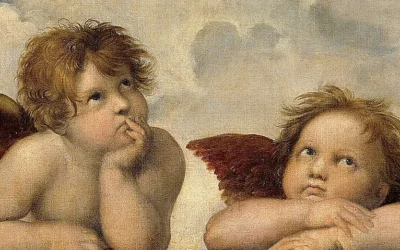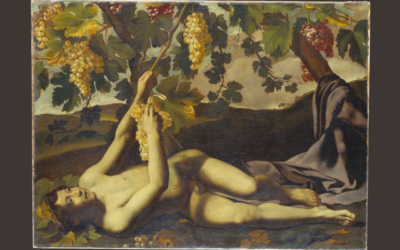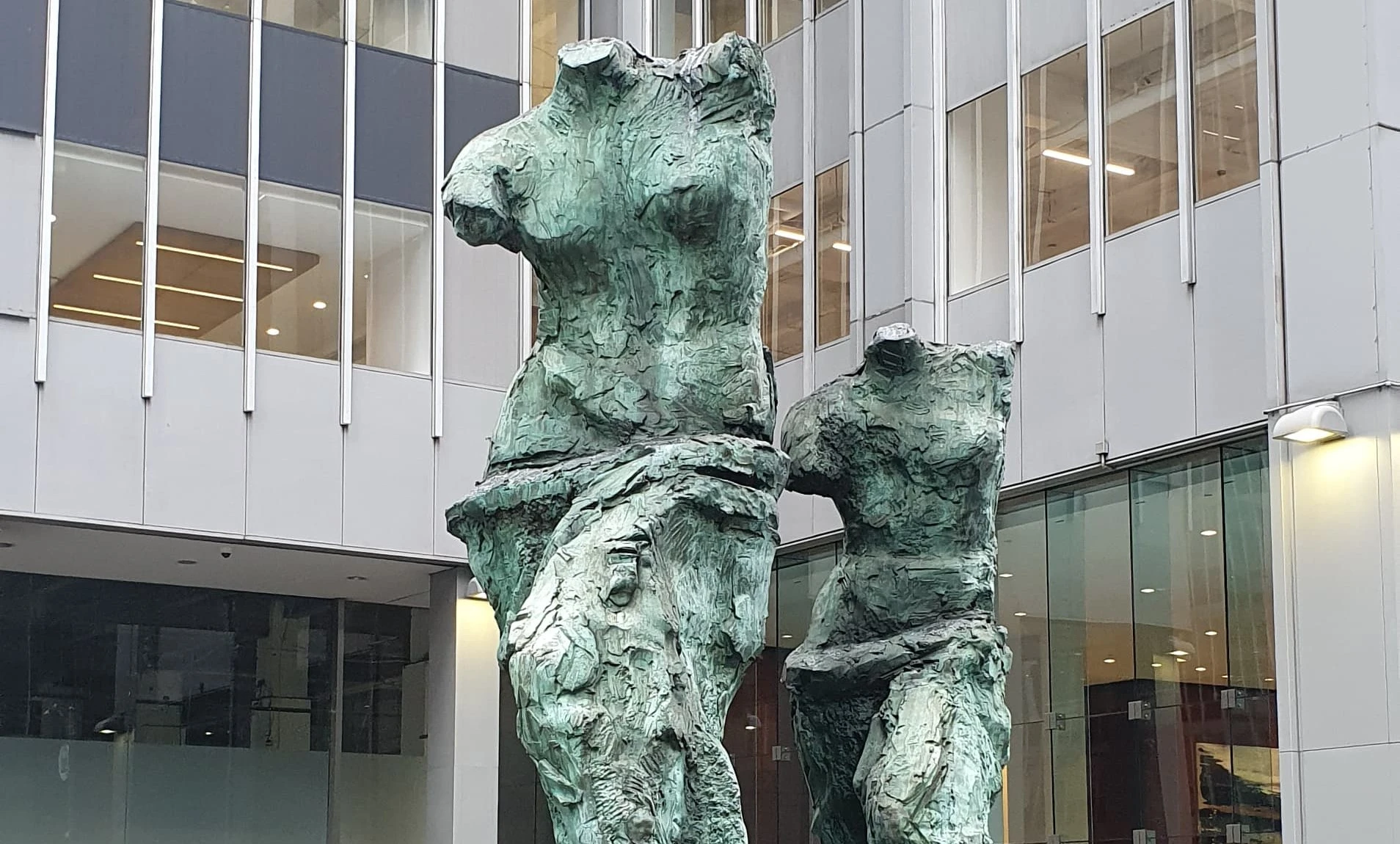Conference and Meeting area at the ECB Main Building © ECB
The European Central Bank (ECB) started its art collection 15 years ago. Its predecessor, the EMI, exhibited and purchased works of art already in 1994. As a relatively young institution, the ECB focuses on collecting contemporary artworks. So far, the collection comprises around 320 pieces of art by 170 artists from 20 EU countries.
The ECB is not the only central bank in the world to buy modern or contemporary art. Most central banks have art collections, some also commission site-specific works when it comes to construction works. It is a tradition that banks and central banks buy art. Deutsche Bank and DZ Bank have also prestigious art collections. As regards to the ECB art, the Maastricht treaty encourages EU institutions to promote the cultural richness of the European Union and the diversity of its expression towards art. Hence, the ECB art division devotes on average a remarkable 140.000 Euros per year to its collection to support young European artists.
What led the European Central Bank to the decision to collect and showcase art?
The idea of collecting art emerged in the mid-nineties within the EMI (European Monetary Institution), ECB’s predecessor.
It was initiated by a small group of dedicated colleagues who wanted to promote European art and culture which resulted in the creation of the ECB Art Committee (ArtCo). Today the ArtCo’s main role is to research and acquire artworks reflecting current trends in European art, manage the ECB art collection, and organise exhibitions (which is currently not possible due to the COVID-19 pandemic). The Committee is placed under the patronage of Christine Lagarde, President of the ECB, and Fabio Panetta, Member of the Executive Board, and is chaired by Cristina San Agapito, Director Administration.

The EU Treaty encourages the promotion of Europe’s culture: “The Union shall contribute to the flowering of the cultures of the Member States while respecting their national and regional diversity and at the same time bringing the common cultural heritage to the fore.” (Article 167)
What strategy does the ECB pursue with regard to its commitment to art?
Our objective is to focus on young, emerging artists from the European Member States. We are keen to showcase the richness and diversity of contemporary art in Europe and to enable ECB staff and visitors to become familiar with it through exhibitions, art talks and other formats.
How important is the promotion of young artists?
Focusing on young, emerging artists from the European Member States has been our motivation from the very beginning. This is how our art exhibition and acquisition concept with an emphasis on Europe’s more recent history evolved. Since 1997, the ECB art collection has been showcasing young, talented artists from a selected EU Member State every year and acquired works for its collection from these exhibitions. To this day we have presented 22 countries and for next year, provided the situation around the pandemic will allow, we aim to showcase Contemporary art from Romania – an exciting project given Romania’s vibrant art scene.
How important is the relationship with the artists?
This relationship is vital. In the past we have often invited artists whose work we would showcase in the exhibition, to come on-site beforehand to work on a site-specific position or to conduct an artist talk with our staff members and visitors. In all our projects we have put artists themselves, as well as their work into the focus. This is not only a sign of respect to their creativity and work but an essential element to the success of such collaboration.
Is there a special focus and why does the focus lie on it?
The ECB art collection focuses on contemporary art and includes approximately 480 works. It is largely made up of works by artists showcased in the “country exhibitions” focussing on internationally emerging artists. This way, the collection has become a chronicle, reflecting on the developments in European contemporary art as well as on the temporal context in which the collection was created and has evolved. Our institution is located in three buildings in Frankfurt.
At the Main Building, located in Frankfurt’s Ostend, we have grouped paintings, photographs and sculptures around the different views of the human being as well as reflected upon different perceptions of landscape and space (the Concept of “Humans & Landscape”) – the latter clearly suggested by the building’s remarkable architecture, creating fascinating spaces and dimensions.
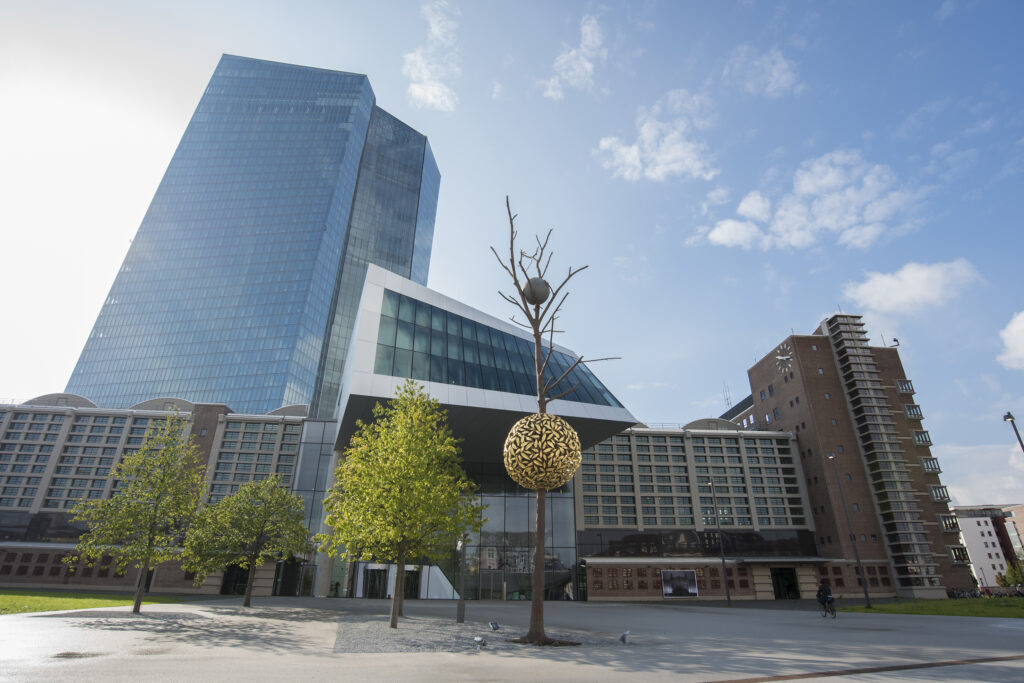
At the Eurotower, located in Frankfurt’s city centre and which today hosts the ECB Banking Supervision teams, we pay tribute to the arrival of the staff members, who came as „New Frankfurters“ from all countries of the European Union. Here works by young artists are presented who also came to Frankfurt and the Rhine-Main area as „New Frankfurters“ from various countries to study or work and thereby enrich the local art scene.
Last but not least, the ECB alludes to the distinctive architecture of the Japan Center, also located in Frankfurt’s city centre, by naming the concept “Rhythms and Patterns”. The theme allows a wide artistic interpretation by reflecting on the motif or production method of the work, by applying a modular principle or certain repetitive (even complex or algorithmic) processes, or as a strategy to categorize, structure, synchronise or define certain aspects and also in a literal sense – by interpreting it as a way of describing patterns of behaviour, perception.
Does the ECB also sell some of its art works again or is it a buy and hold approach?
Our collection’s primary intention is to showcase European contemporary art and share it with our visitors and staff. Our objective is to promote European values and our common identity under the EU’s motto “United in diversity”. Thus, it is a buy and hold approach and we do not pursue any commercial interests with our collection. We take an interest in making maximum use of the space available on our premises for displaying the collection and in making it accessible to as many people as possible.
We are proud of this truly European collection comprising different media and including positions by Nevin Aladaǧ, Ólafur Eliasson, Elmgren & Dragset, Barbara Klemm, Thomas Bayrle, ULAY, Giuseppe Penone, Nedko Solakov, Liam Gillick and Esther Stocker (with the latter four being the winners of our art on-site competitions in 2016 (for the Main Building) and 2018 (for the Eurotower).
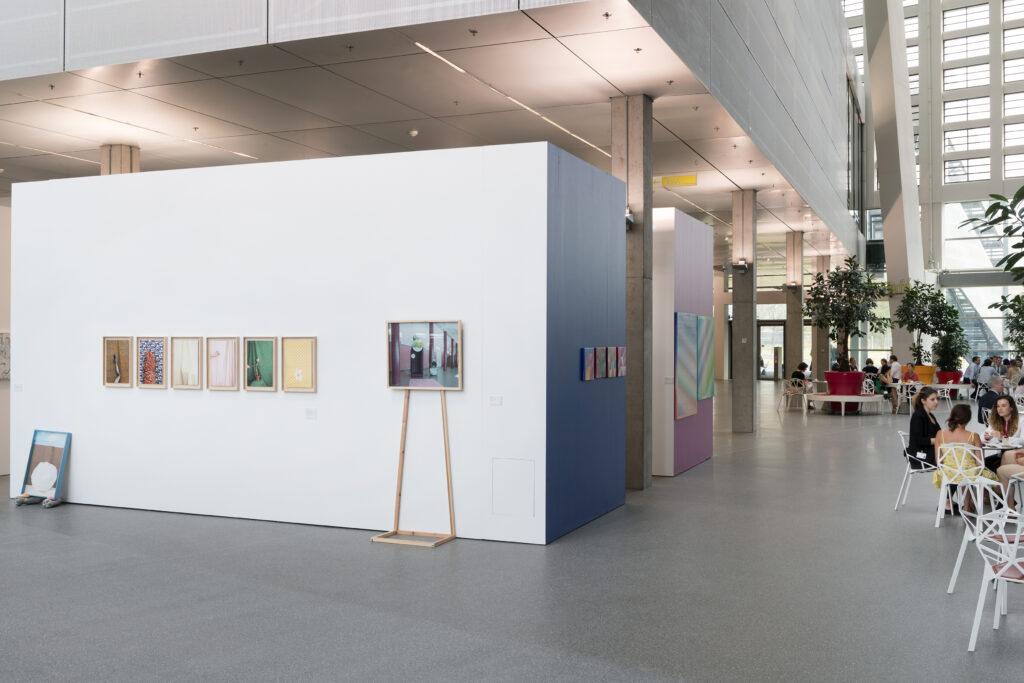
How important is it to cooperate with museums and art fairs?
Art fairs have and will continue to be important trendsetters and indicators in the art scene, as well as an important networking hub in the art world. Museums and cultural institutions in general, remain core pillars in arts and culture-related engagement. Supporting and collaborating with the local cultural institutions, has always been key to the ECB, an EU institution serving the people.
What are the plans for the future?
We hope to be able to continue developing our collection further in the years to come. With the “Country exhibition series” coming slowly to an end, we will have the chance to reflect upon and integrate topics and trends in Europe’s fascinating and very diverse art scene. We will also continue to digitalize our collection via the ECB Art App making our art collection also accessible outside our walls.




